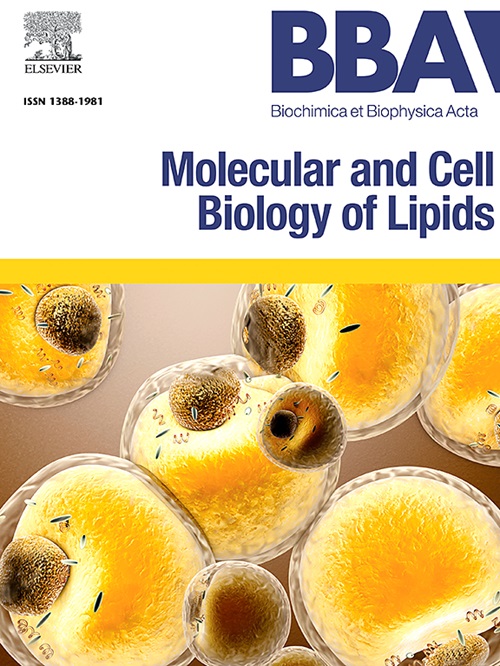Phosphoinositide phosphatases: Modifiers of phosphoinositide signaling in health and disease
IF 3.3
2区 生物学
Q2 BIOCHEMISTRY & MOLECULAR BIOLOGY
Biochimica et biophysica acta. Molecular and cell biology of lipids
Pub Date : 2025-06-19
DOI:10.1016/j.bbalip.2025.159652
引用次数: 0
Abstract
Phosphoinositides are membrane-bound phospholipids that are derived from the reversible phosphorylation of phosphatidylinositol by the opposing actions of phosphoinositide kinases and phosphatases. Phosphoinositides are minor lipid constituents of cellular membranes; however, they assert a varied and profound influence on numerous biological processes both at the plasma membrane and on subcellular organelle membranes. Phosphoinositide phosphatases encompass multiple enzyme families that hydrolyze the phosphate group from the inositol ring of phosphoinositide species to modify signaling pathways that govern development and homeostasis. Genetic mutations that alter the function or expression of phosphoinositide phosphatases are causative of severe developmental syndromes or contribute to human diseases such as cancer, metabolic disorders and neuropathies. This review will focus on a select group of phosphoinositide phosphatase family members. Specifically, we will discuss the lipid and dual-specificity protein phosphatase PTEN, including the multiple regulatory mechanisms that define this enzyme as an established tumor suppressor. We will focus on recent discoveries that describe novel roles for phosphoinositide regulation on subcellular membranes by INPP5E and INPP5K, two members of the inositol polyphosphate 5-phosphatase family. Finally, the diverse biological and pathophysiological roles of the inositol polyphosphate 4-phosphatases, INPP4A and INPP4B, will be outlined. Collectively, these discussions will reveal the critical roles that phosphoinositide phosphatases play in both human development and for prevention of disease.
磷酸肌醇磷酸酶:健康和疾病中磷酸肌醇信号的调节剂。
磷脂肌肽是膜结合的磷脂,由磷脂肌肽激酶和磷酸酶的相反作用使磷脂酰肌醇可逆磷酸化而产生。磷酸肌肽是细胞膜的少量脂质成分;然而,它们对质膜和亚细胞器膜上的许多生物过程都有不同而深远的影响。磷酸肌醇磷酸酶包括多个酶家族,它们水解磷酸肌醇环上的磷酸基团,从而改变控制发育和体内平衡的信号通路。改变磷酸肌肽磷酸酶功能或表达的基因突变可导致严重的发育综合征,或导致癌症、代谢紊乱和神经病等人类疾病。本文将重点介绍一组磷酸肌苷磷酸酶家族成员。具体来说,我们将讨论脂质和双特异性蛋白磷酸酶PTEN,包括将该酶定义为已建立的肿瘤抑制因子的多种调节机制。我们将重点关注最近的发现,描述了肌醇多磷酸5-磷酸酶家族的两个成员INPP5E和INPP5K在亚细胞膜上调节磷酸肌苷的新作用。最后,将概述肌醇多磷酸4-磷酸酶INPP4A和INPP4B的多种生物学和病理生理作用。总的来说,这些讨论将揭示磷酸肌苷磷酸酶在人类发育和疾病预防中发挥的关键作用。
本文章由计算机程序翻译,如有差异,请以英文原文为准。
求助全文
约1分钟内获得全文
求助全文
来源期刊
CiteScore
11.00
自引率
2.10%
发文量
109
审稿时长
53 days
期刊介绍:
BBA Molecular and Cell Biology of Lipids publishes papers on original research dealing with novel aspects of molecular genetics related to the lipidome, the biosynthesis of lipids, the role of lipids in cells and whole organisms, the regulation of lipid metabolism and function, and lipidomics in all organisms. Manuscripts should significantly advance the understanding of the molecular mechanisms underlying biological processes in which lipids are involved. Papers detailing novel methodology must report significant biochemical, molecular, or functional insight in the area of lipids.

 求助内容:
求助内容: 应助结果提醒方式:
应助结果提醒方式:


